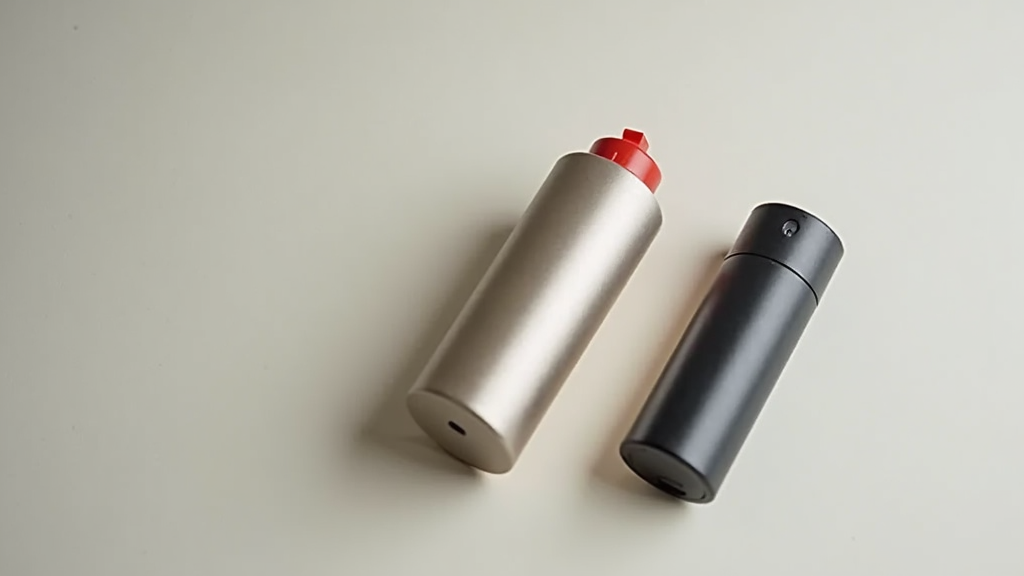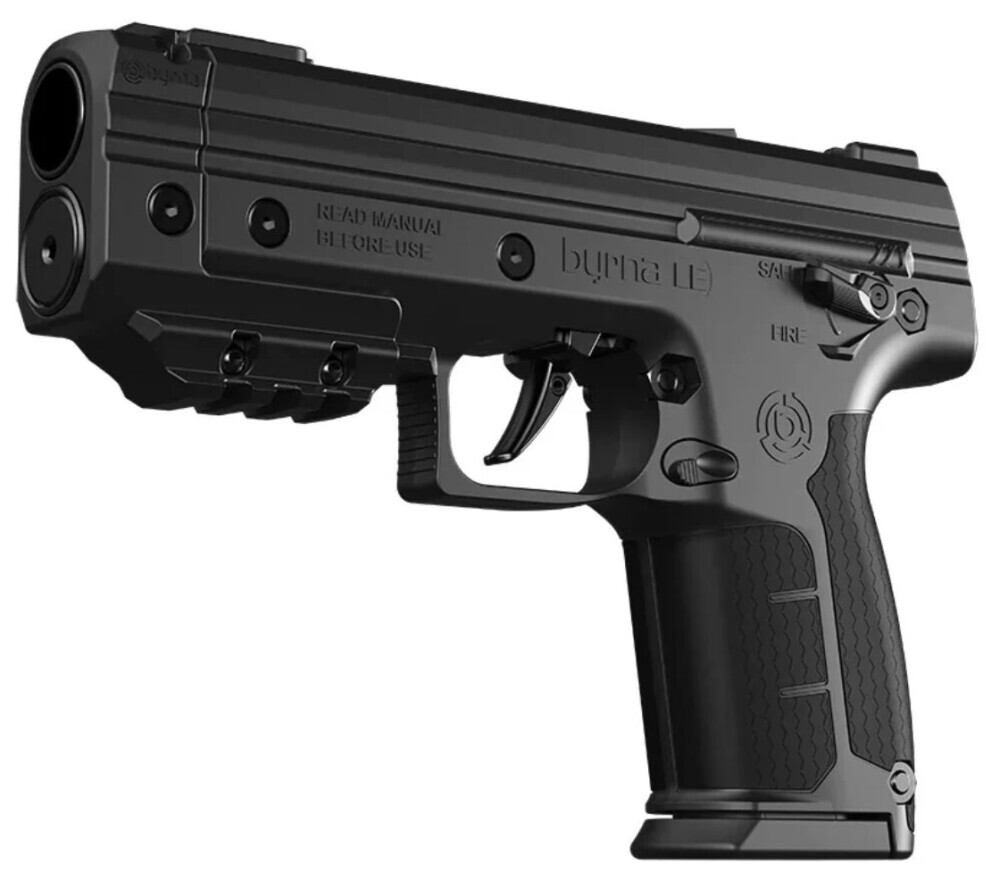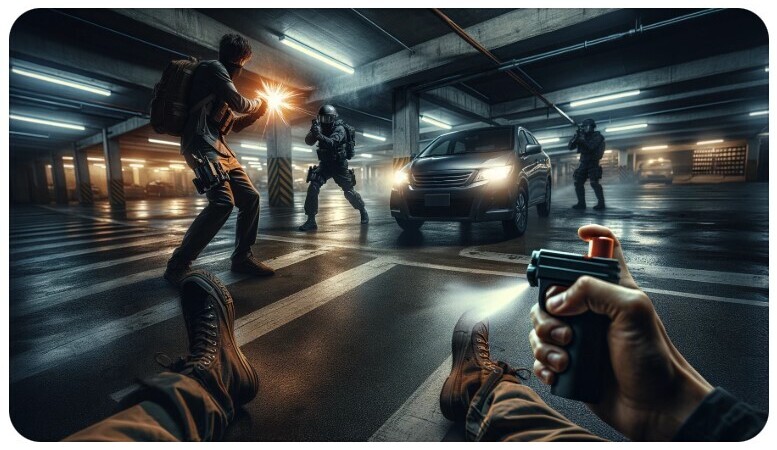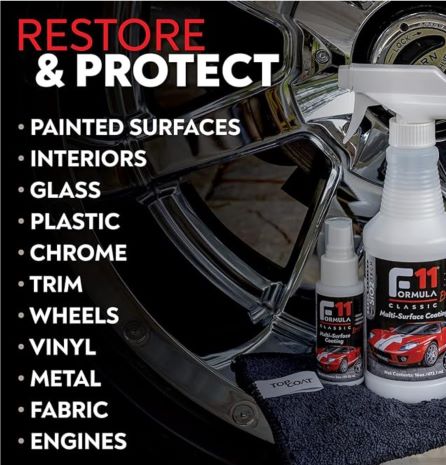The topic of personal protection has moved into the spotlight as more people look to defend themselves in uncertain times. Today, I want to talk about two types of self-defense tools. One is the Byrna, a modern, non-lethal device.
The other is the class of traditional self-defense weapons such as pepper spray, Tasers, and stun guns. Both groups of items come with advantages and drawbacks. In this article, I check out the differences between the Byrna and common self-defense weapons.
I cover what each one can do, how they work, and how well they meet everyday needs. To help you get a better perspective, I have included extensive details and practical tips to make sure you feel informed when choosing between these options.
Overview of Self-Defense Options
People have many options for self-defense. Some lean toward tools with a long track record like pepper spray. Others are curious about the new technology found in devices like the Byrna. This piece looks at both, outlining strengths and weaknesses.
Many factors come into play, such as ease of use, reliability, and cost. Consumers enjoy reading comparisons that help them make informed decisions. Below, I step through each option so that you can see what fits your personal needs.
In today’s unpredictable world, having a dependable self-defense tool is very important. Whether you are taking a stroll downtown or traveling in less familiar territories, the choice you make can affect your sense of safety.
In this article, we go into detail about each option. We also explain real-life usage scenarios, maintenance tips, and legal considerations to ensure you are better equipped to decide which tool suits you best.
What is Byrna?
The Byrna is a CO2-powered, non-lethal self-defense launcher designed to incapacitate a threat without causing permanent injury. It’s often referred to as a “launcher” or “non-lethal gun,” and it does not require a background check or permit in most U.S. states since it isn’t classified as a firearm.
Byrna is a modern self-defense device that offers a non-lethal alternative to traditional weapons. It launches a chemical irritant that temporarily incapacitates an attacker. Users do not need to be close to an assailant to get protection. The design focuses on safety and simplicity. Byrna is meant for people who prefer a technology-based option with a unique operating method.
The device is compact and designed to be carried easily in everyday bags. It fires a solid projectile of chemical spray that disrupts an attack within seconds. Many appreciate that it does not need ammunition, making it a friendlier option compared to a firearm.
Byrna also comes with built-in safety features that limit the risk of accidental discharge. The battery-operated electronics give a boost by ensuring that the unit is ready when you need it most.
🔸 Key Features
CO2-Powered: Uses 8g or 12g CO2 cartridges for propulsion.
Ammo Types: Shoots .68 caliber projectiles (various types: kinetic, chemical irritants, training rounds).
Magazine: 5-7 rounds per magazine, depending on model.
Effective Range: 30 to 60 feet for most models.
Non-LethalDesigned
🔸 Types of Projectiles
You can show these visually in your image set:
- Kinetic Rounds (Solid) – Hard, non-explosive plastic projectiles to cause blunt-force pain.
- Chemical Irritant Rounds:
-
- Pepper (PAVA) – Similar to pepper spray; causes eye and respiratory irritation.
- CS Gas – Military-grade tear gas variant.
- Max Projectiles – Combination of PAVA and CS gas.
- Eco-Kinetic Rounds – For practice; biodegradable.
🔸 Target Audience & Use Cases
- RV travelers
- Solo hikers
- Urban commuters
- Women seeking discreet protection
- Homeowners wanting non-lethal home defense
- Parents looking for college student safety tools
No lethal consequences: less legal risk and emotional trauma than with firearms.
In tests, users commented that it was simple enough to deploy even under high stress. Many modern users have praised Byrna for its innovative approach to personal safety, citing that its technological features offer a next-level, cool alternative to traditional methods.
Beyond its basic functionality, Byrna has been developed with considerations for ergonomics and ease of maintenance. Detailed user manuals and online tutorials assist new users in familiarizing themselves with its operation.
The design team has also provided guidance for regular care and upkeep, ensuring long-term reliability. This extra layer of customer support helps users feel secure about their purchase and makes Byrna a solid option for those willing to invest in modern safety solutions.
What are Traditional Self-Defense Weapons?
Traditional self-defense weapons include items like pepper spray, Tasers, and stun guns. These methods have been in use for many years and remain popular due to their simplicity and effectiveness.
Each of these tools works a little differently. Pepper spray uses a concentrated burst of chemical irritants. A taser delivers an electric shock from a safe distance, and a stun gun requires close contact to work effectively.
Many users trust these weapons because they are straightforward and generally affordable. For example, pepper spray is compact enough to fit in a pocket and can be used instantly. Tasers, although requiring proper aim, offer the advantage of being used at a moderate distance.
Stun guns, while effective, demand that users be near the intended target when activated. Despite varying methods, all these tools share the common goal of stopping an attacker quickly while minimizing permanent harm.
The familiarity of traditional self-defense weapons makes them attractive to a broad audience. They generally do not depend on batteries or complicated electronics, which means they are often ready to use at a moment’s notice.
However, each option comes with challenges. Some traditional weapons require practice to use effectively, and others may have legal restrictions depending on your area. It is very important to understand fully how each tool fits with your lifestyle and with local laws before making a purchase decision.
Additionally, the longevity of these methods contributes to a well-established reputation. Over the years, many users have relied on simple yet robust designs that demand little maintenance. Instructional videos, community reviews, and hands-on demonstrations add to the overall body of knowledge, which can be tremendously helpful if you are considering a traditional tool for personal defense.
Pros and Cons of the Byrna Device
The Byrna stands out for its modern design and user-friendly safety features. It offers several benefits that traditional self-defense tools may lack, but like any device, it also has its drawbacks. Here, I lay out the advantages and disadvantages of Byrna in detail.
Pros:
- The device is easy to handle, even in high-stress situations.
- It uses non-lethal projectiles that aim to minimize lasting harm.
- A pepper and gas combo disables without bloodshed.
- Legal in all fifty United States.
- Can be transported in airplane baggage.
- The unique design helps increase readiness, making it available when needed.
- The compact design makes it convenient to carry in everyday bags or purses.
- It provides clear status indicators that inform users about overall readiness.
- Trusted by more than five hundred government agencies, police departments, and private security firms globally.
Cons:
- The technology may seem unfamiliar to those accustomed to traditional tools, requiring some practice to become accustomed to it.
- The cost is generally higher compared to many older self-defense options.
- Availability may be limited in certain regions due to regulations surrounding newer technology, such as specific projectile specifications in New York and California.
Recent user feedback suggests that while the learning curve exists, most find the transition to a modern device ultimately rewarding. Some users report that after an initial period of adjustment, the ease of use under pressure is enhanced by the clear indicators and straightforward operation.
Pros and Cons of Traditional Self-Defense Weapons
Traditional self-defense weapons have been the go-to choice for personal safety for decades. Their long history and widespread availability make them a dependable option for many individuals. Here is a thorough breakdown of their strengths and weaknesses.
Pros:
- They possess a long history of reliable use and are widely available in most markets.
- These tools are usually inexpensive and can be easily replaced if lost or depleted.
- The simplicity of the design in most traditional self-defense options means they are usually easy to learn and operate effectively.
- They often require little maintenance, such as charging or complex care routines.
Cons:
- Some traditional weapons require close proximity to an attacker, which can introduce additional risks during an encounter.
- Tools like Tasers and stun guns need accurate aiming to be effective, demanding extra training and precision.
- There are instances of accidental discharge where tools like pepper spray can be triggered unintentionally, posing a risk to the user.
- Legal restrictions vary widely depending on local laws, and not all traditional weapons are permitted in every location.
While many swear by the simplicity and reliability of traditional methods, others point out that these options can be less forgiving in dynamic and high-stress situations.
For individuals who have trained extensively with these tools, their longstanding design can be a major asset. However, if you are new to self-defense, it might be beneficial to consider options with modern safety features.
Key Feature Comparisons
Ease of Use: Using any self-defense tool effectively under stress is crucial. Byrna comes with clear and straightforward indicators along with a simple trigger system that many users find intuitive after a short period of practice. Traditional self-defense weapons might be simpler in design, but often require close contact or precise aiming in stressful conditions.
In scenarios where quick decisions are needed, the ease of use of each device can be a significant factor. Extensive training with both modern devices and older tools shows that familiarity and muscle memory play a crucial role. Those who consistently practice can make either option work effectively under pressure.
Reliability: Reliability is at the core of every self-defense choice. Byrna’s modern electronic components are designed to work consistently, although they depend on battery power and regular maintenance. On the other hand, traditional weapons rely on mechanical operation and chemical stability, which can be very dependable in harsh environments or extreme weather conditions.
For many users, having a self-defense tool that is ready in any situation is a decisive factor. While new technology can sometimes seem less reliable to the cautious, regular checks and proper upkeep can make modern devices just as dependable as their older counterparts.
Portability: Portability is a very important aspect of any self-defense tool. Byrna is designed to be compact and lightweight so that it fits easily into a bag or even a large pocket. Many traditional weapons are also designed with portability in mind. Pepper spray, for example, is extremely small and can be quickly accessed when needed.
Tasers and stun guns, while slightly bulkier, are still built for fast access. Ultimately, the ideal self-defense tool will depend on your personal comfort with carrying a particular type of device. Detailed comparisons show that both modern and traditional options can be made convenient for everyday use, so personal preference plays a significant role.
Cost and Value: Financial considerations are always part of the decision-making process. Byrna generally carries a higher price tag due to its advanced features and modern design. Traditional self-defense weapons are typically more budget-friendly, which makes them appealing to a broad audience.
However, a higher cost can sometimes be justified if additional safety features and technology-driven innovations are important to you. Understanding the value of each option requires balancing upfront costs with long-term reliability and ease of maintenance. It is worth noting that investing in a tool that matches your needs can save you from potential costs associated with misuse or inadequate protection in a dangerous situation.
Safety Features: Safety remains very important when choosing a self-defense tool. Byrna includes built-in safety indicators that alert users regarding battery life and overall device status. Traditional tools, while lacking high-tech indicators, focus on simple mechanical designs that inherently reduce accidental activation.
In many cases, advanced devices offer extra layers of protection through design innovations and electronic feedback. Detailed safety tests reveal that both modern and traditional options can be highly safe, provided the user is properly trained. Your personal comfort with a device’s safety features should be a significant consideration when making your selection.
User Reviews and Reputation
Both Byrna and traditional self-defense weapons have received considerable attention from users across various platforms. Many people report that Byrna feels innovative and provides more control in stressful scenarios.
Some users appreciate the clear safety indicators and the convenience of a technology-based device. They feel that having a modern tool that gives a visual update on its readiness can make a real difference when seconds count.
On the flip side, traditional self-defense tools continue to enjoy a strong reputation built over decades. Their longstanding use in real-world situations instills confidence in many users. The familiar design of pepper spray, for instance, has led to numerous positive reviews from individuals who have successfully used it in emergencies.
Moreover, the affordability and ease of replacing these traditional tools add to their appeal. In online forums and discussion groups, opinions are mixed but respectful. Users sharing their experiences often advise potential buyers to consider both personal training and local legal requirements before deciding on a device.
Many experts suggest that before investing in any self-defense device, it is smart to read user reviews and try out the tools if possible. A hands-on demonstration can provide insight into the ergonomics and practical effectiveness of each option.
If you take the time to research and even speak with current owners of these devices, you will more clearly understand the benefits and limitations from a real-world perspective.
Final Verdict: Which One Should You Choose?
Choosing between Byrna and traditional self-defense weapons depends on a variety of factors and personal preferences. Each option has its own unique appeal. If you want a device that uses modern technology with built-in indicators and a high level of safety, Byrna might be right for you. It provides extra layers of feedback and refined control features that can be very reassuring in a dangerous situation.
If you favor simplicity and cost-effectiveness, traditional self-defense tools might be preferable. Many individuals appreciate the long history and proven performance of weapons such as pepper spray, Tasers, or stun guns.
They trust these tools due to their ease of access and straightforward operation. It isn’t just about choosing the right tool. It is about how well the tool fits into your lifestyle and meets your specific needs. Choosing the right device means you can feel confident and prepared, whether you are out for a walk or in a tricky situation.
Local laws and regulations further complicate the decision. Some regions have restrictions on electronic self-defense devices, while others may limit the use of chemical irritants. It is very important to check in with local guidelines and consult legal experts if needed.
Reflecting on your budget, training, and the style of protection you desire will ultimately guide you toward the correct choice.
Experts recommend that, regardless of which tool you opt for, regular practice is key. Spending time in training sessions or practice drills can greatly improve your ability to use the device effectively.
When you are familiar with your self-defense tool, you boost your confidence and overall safety in a potential crisis. Both modern and traditional options have a lot to offer; what matters most is selecting an option that feels right for you and fits your day-to-day routine.
Personal Experience
When it came time for me to take my personal protection seriously, I decided to purchase a handgun. Since I had friends in the law enforcement industry, I sought their assistance.
They recommended a good handgun to purchase and offered training to use it. I also had to get a permit to carry the weapon. The entire process, from purchase to feeling comfortable using the handgun, took five months.
With practice, I was lethal at fifteen feet! However, using the handgun still scared me. If I shot someone, no matter the circumstances, I would have to go to jail until the incident was sorted out. I could carry insurance through the USCCA, but the process would still be a legal one.
When I found the Byrna non-lethal weapon, I was more excited about being able to carry it and deter an attacker without engaging in lethal force. It is easy to use, and it does not require a background check or permit in the U.S. states since it isn’t classified as a firearm.
I sold my handgun and now rely only on the Byrna for my self-defense needs!
Final Thoughts
The contest between Byrna and traditional self-defense weapons is not just about picking the best tool in a universal sense. It is about how each option matches up with your personal lifestyle, comfort level, and specific safety needs. Both choices have their clear advantages and minor setbacks.
Whether you choose a modern device with advanced safety checks or a traditional tool with a long history of reliable performance, the overall goal remains the same – you want a method that helps you feel secure and confident in challenging circumstances.
Personal protection is not one-size-fits-all. The best self-defense tool for you will be the one you trust and have practiced with enough to know how to use it effectively when necessary.
Take the time to learn about your chosen option, whether through hands-on practice sessions, reading in-depth reviews, or consulting with experts in the field. Your safety and that of your loved ones are very important and well worth the effort of making an informed decision.
Before making your final decision, consider organizing a session with a local self-defense instructor or even joining community groups that focus on personal safety. These groups often share firsthand experiences and can give you a better sense of what to expect from a particular device.
In addition, many online resources and video tutorials are available that break things down in a clear, easy-to-understand manner. Taking advantage of these resources can make all the difference when it comes to feeling truly prepared.
In the end, the choice between Byrna and traditional self-defense weapons comes down to your individual needs, preferences, and the environment in which you live.
Research thoroughly, ask plenty of questions, and practice consistently with the tool you choose. By doing so, you invest not only in a useful device but also in your own peace of mind and personal safety. Stay informed, stay prepared, and above all, stay safe.
But, for the price, buy one and enjoy a secure and safe self-defense option!












Recent Comments